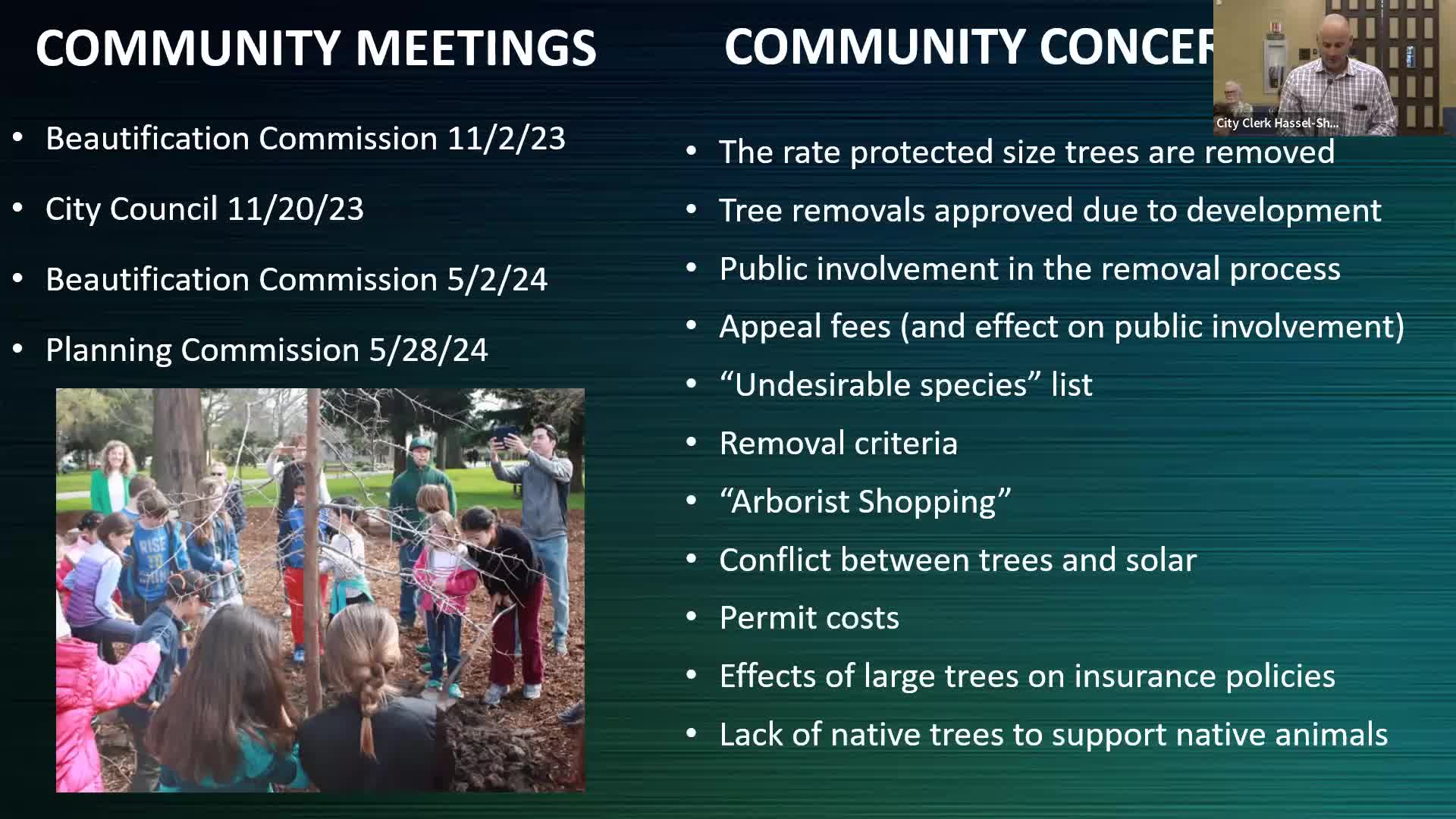City grapples with tree removal amid development concerns
June 17, 2024 | Burlingame, San Mateo County, California

This article was created by AI summarizing key points discussed. AI makes mistakes, so for full details and context, please refer to the video of the full meeting. Please report any errors so we can fix them. Report an error »

Concerns over tree removal in the name of development dominated discussions at a recent government meeting, prompting calls for enhanced preservation measures and public involvement. Officials acknowledged the growing unease regarding the rate at which significant trees are being cut down, often without adequate community notification or input.
Participants emphasized the need for a more structured appeal process, suggesting that while a fee for appeals could streamline staff resources, it might deter public participation. Adjustments to the criteria for tree removal were also discussed, particularly regarding the controversial \"undesirable species list,\" which had raised alarms among residents who feared it could lead to the removal of healthy trees based solely on species classification.
The meeting also touched on the complexities of tree and solar panel interactions, referencing the California Shade Act, which outlines rights concerning tree height in relation to solar installations. This issue has become increasingly relevant as more residents install solar panels, leading to potential conflicts with existing trees.
In a significant policy shift, officials proposed increasing permit fees for tree removals based on the size of the tree, moving away from a flat fee structure. This change aims to reflect the true value of trees and their ecological contributions. However, concerns were raised about the implications for homeowners, particularly in light of reports that insurance companies are canceling policies due to vegetation proximity.
The importance of native trees was underscored by representatives from the Native Plant Society, who highlighted their ecological benefits amid growing environmental challenges. The meeting concluded with discussions on the balance between tree protection and state mandates related to development, indicating that further deliberation on these issues is necessary as the community navigates its urban forestry policies.
Participants emphasized the need for a more structured appeal process, suggesting that while a fee for appeals could streamline staff resources, it might deter public participation. Adjustments to the criteria for tree removal were also discussed, particularly regarding the controversial \"undesirable species list,\" which had raised alarms among residents who feared it could lead to the removal of healthy trees based solely on species classification.
The meeting also touched on the complexities of tree and solar panel interactions, referencing the California Shade Act, which outlines rights concerning tree height in relation to solar installations. This issue has become increasingly relevant as more residents install solar panels, leading to potential conflicts with existing trees.
In a significant policy shift, officials proposed increasing permit fees for tree removals based on the size of the tree, moving away from a flat fee structure. This change aims to reflect the true value of trees and their ecological contributions. However, concerns were raised about the implications for homeowners, particularly in light of reports that insurance companies are canceling policies due to vegetation proximity.
The importance of native trees was underscored by representatives from the Native Plant Society, who highlighted their ecological benefits amid growing environmental challenges. The meeting concluded with discussions on the balance between tree protection and state mandates related to development, indicating that further deliberation on these issues is necessary as the community navigates its urban forestry policies.
View full meeting
This article is based on a recent meeting—watch the full video and explore the complete transcript for deeper insights into the discussion.
View full meeting
